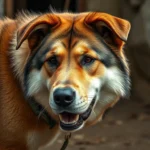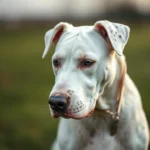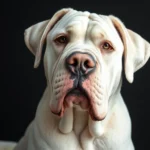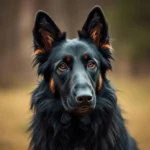
Introduction
Understanding different dog breeds is essential for anyone considering adding a furry friend to their family. Each breed comes with its own unique set of characteristics, traits, and needs. Among the lesser-known breeds is the Hovawart, a fascinating dog with a rich history and appealing qualities. This article will delve into the specifics of dog breeds, with a special focus on the Hovawart, exploring its history, physical characteristics, temperament, health, care requirements, and how it fits into family life.
Understanding Dog Breeds
Definition of Dog Breeds
A dog breed is a specific strain of domestic dogs that share common traits and characteristics, such as appearance, behavior, and purpose. These traits are often the result of selective breeding, which aims to enhance certain qualities. Understanding the characteristics of different breeds can help potential dog owners make informed choices that align with their lifestyle and preferences.
Classification of Dog Breeds
Dog breeds are generally classified into various groups based on their functions and characteristics. The major groups include:
- Working Dogs: Bred for specific tasks like guarding, pulling sleds, and rescue work.
- Herding Dogs: Developed to herd livestock and manage farm animals.
- Sporting Dogs: Known for their ability to hunt and retrieve.
- Terriers: Originally bred for hunting vermin and small animals.
- Toy Dogs: Small breeds often kept for companionship.
- Hounds: Bred for their exceptional sense of smell and ability to hunt.
Breeds within these groups can vary in size, temperament, and purpose, making it essential for owners to choose a breed that matches their living situation and lifestyle.
The Hovawart Breed
History of the Hovawart
The Hovawart is a breed with a rich history that dates back to the Middle Ages in Germany. Originally, these dogs were used as farm dogs, valued for their ability to guard properties and livestock. The name “Hovawart” translates to “guardian of the homestead,” reflecting their role in protecting homes and farms.
In the early 20th century, the breed faced decline but was revitalized by dedicated breeders who sought to preserve its lineage. Today, the Hovawart is recognized for its loyalty, intelligence, and versatility, making it a cherished companion and working dog in various roles, from search and rescue to therapy and assistance work.
Physical Characteristics
The Hovawart is a medium to large-sized dog with a sturdy build. Here are some key physical features:
- Size: Males typically weigh between 90-110 pounds, while females range from 70-90 pounds.
- Height: They stand about 22 to 28 inches tall at the shoulder.
- Coat: The breed has a dense, weather-resistant double coat, which can be straight or wavy.
- Color Variations: Hovawarts can be black, blond, or brown, often with markings.
Distinctive features include their long, flowing coat and expressive, intelligent eyes, giving them a noble appearance.
Temperament and Behavior
The Hovawart is known for its friendly and confident temperament. They are typically:
- Loyal: Hovawarts form strong bonds with their families and are protective of them.
- Intelligent: This breed is highly trainable and eager to learn, making them suitable for various roles.
- Social: They generally get along well with children and other pets when properly socialized.
However, Hovawarts require early socialization and consistent training to ensure they develop into well-adjusted adult dogs. Their intelligence can lead to stubbornness, so positive reinforcement methods are most effective.
Health Considerations for Hovawarts
Common Health Issues
Like all dog breeds, Hovawarts can be prone to certain health issues. Some common concerns include:
- Hip Dysplasia: A genetic condition that affects the hip joint and can lead to arthritis.
- Elbow Dysplasia: Similar to hip dysplasia, this condition affects the elbow joint.
- Bloat: A serious condition where the stomach fills with gas and twists, requiring immediate veterinary attention.
Preventative care, including regular veterinary check-ups, a balanced diet, and proper exercise, can help mitigate these health risks.
Lifespan and Aging
The average lifespan of a Hovawart is around 10 to 14 years. As they age, they may require more frequent veterinary visits and adjustments to their diet and exercise regimen. Owners should be attentive to signs of aging, such as decreased energy levels and changes in mobility, to ensure their pets remain comfortable and healthy.
Care and Maintenance of Hovawarts
Grooming Needs
Grooming is an essential part of caring for a Hovawart. Their dense coat requires regular maintenance to keep it healthy. Here are some grooming tips:
- Brushing: Brush at least once a week to prevent matting and remove loose hair. During shedding seasons, more frequent brushing may be necessary.
- Bathing: Bathe only as needed to avoid stripping the coat of its natural oils.
- Nail Trimming: Regularly trim nails to prevent overgrowth and discomfort.
Exercise Requirements
Hovawarts are active dogs with high energy levels. They require substantial daily exercise to stay healthy and happy. Recommended activities include:
- Walking: At least 60 minutes of brisk walking each day.
- Play: Engaging in games like fetch or tug-of-war.
- Mental Stimulation: Puzzle toys and obedience training can keep their minds sharp.
Regular exercise helps prevent behavioral issues and keeps them physically fit.
Nutrition and Diet
A well-balanced diet is crucial for a Hovawart’s health. Consider the following dietary practices:
- High-Quality Food: Look for dog food that lists meat as the first ingredient.
- Age-Appropriate Diet: Puppies, adults, and seniors have different nutritional needs.
- Avoid Overfeeding: Monitor portion sizes to prevent obesity, a common issue in larger breeds.
Consulting with a veterinarian can help establish the best diet plan tailored to your Hovawart’s specific needs.
Training and Socialization
Basic Training Techniques
Training a Hovawart can be a rewarding experience due to their intelligence and eagerness to please. Consider these training techniques:
- Positive Reinforcement: Use treats, praise, and play as rewards for good behavior.
- Consistency: Be consistent with commands and rules to reinforce learning.
- Short Sessions: Keep training sessions brief but frequent to maintain their attention.
Socialization Strategies
Early and continuous socialization is vital for a well-rounded Hovawart. Here are some strategies:
- Expose to Various Environments: Take your Hovawart to different places, such as parks, stores, and busy streets.
- Meet Other Dogs: Arrange playdates with other dogs to improve their social skills.
- Introduce New Experiences: Encourage exposure to various sounds, sights, and people to build confidence.
Proper socialization can help reduce anxiety and fearfulness, making for a more adaptable pet.
Hovawart in Family Life
Compatibility with Children
Hovawarts are generally good with children, making them suitable family pets. Here are some points to consider:
- Gentle Nature: They are known for their patience and gentle demeanor around kids.
- Supervision: Always supervise interactions between dogs and young children to ensure safety.
- Teaching Respect: Teach children to respect the dog’s space and not to disturb them while eating or sleeping.
Living Arrangements
While Hovawarts can adapt to various living situations, they thrive best in environments that provide adequate space and stimulation. Here are some considerations:
- Homes with Yards: A home with a secure yard is ideal for allowing free play and exercise.
- Apartment Living: They can live in apartments if provided with sufficient daily exercise and mental stimulation.
- Active Lifestyles: Families that enjoy outdoor activities will find a great companion in a Hovawart.
Conclusion
The Hovawart is a unique breed that combines loyalty, intelligence, and versatility, making it an excellent choice for families and active individuals. Understanding the breed’s characteristics, health considerations, and care requirements is crucial for ensuring a happy and fulfilling life for both the dog and its owners. If you’re considering adding a new member to your family, the Hovawart could be a fantastic option that brings joy and companionship for years to come.









